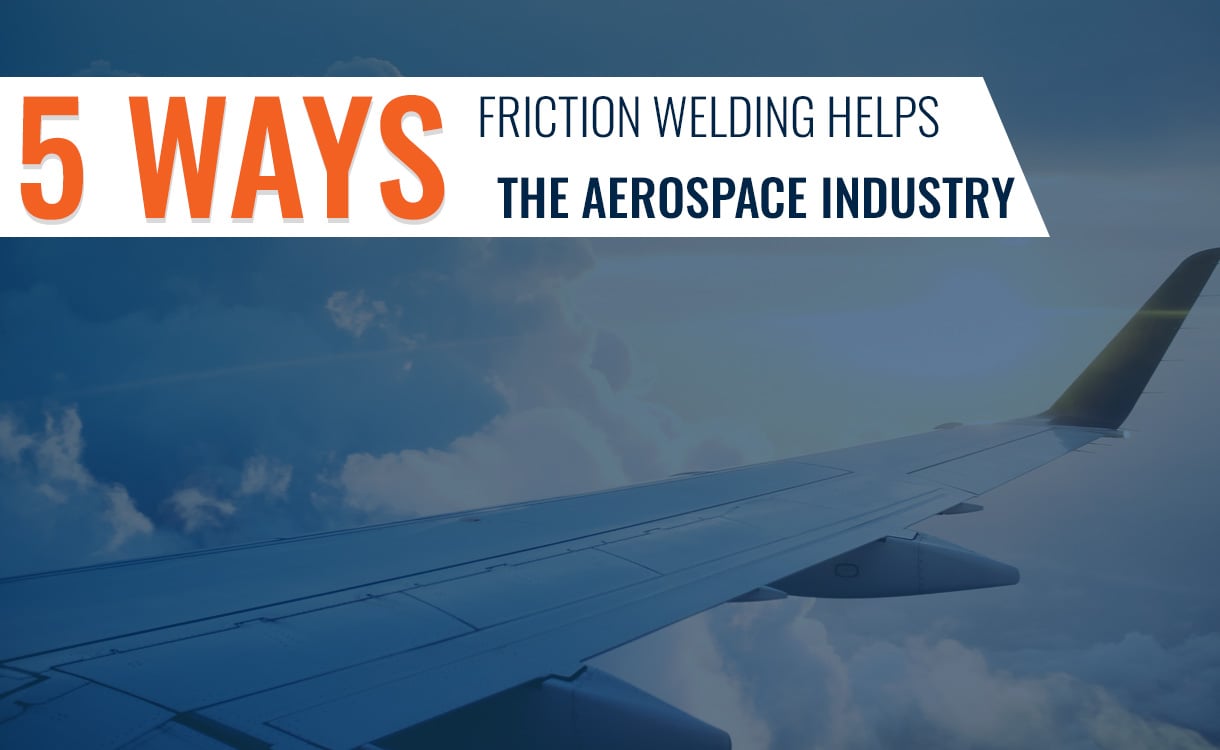
For four decades, MTI has been the global leader in Friction Welding technology — a forging technique that offers many advantages over traditional fusion welding. With the ability to create super-strong bonds of virtually any size, Friction Welding is uniquely capable of serving a broad spectrum of industries.
One industry in which we are constantly innovating is that of aerospace. With changing priorities and advancing technologies that create more demanding joining applications, MTI is continually adapting the Rotary and Linear Friction Welding processes to meet the demands of aerospace engineers and manufacturers
Here are the top 5 ways we’re helping the industry move forward:
1. Stronger welds
Complex geometric shapes, large parts and small components used in aerospace all require reliability that stands up to the forces and durability of flight. Because Friction Welding is actually a forging technique, materials are bonded together to create a much stronger end result with a longer life than with fusion welding.
2. Lighter components
Friction Welding opens the door to joining of dissimilar materials, which allows designers to use lighter and/or higher performance materials than traditional joining methods. This allows for reduced weight of parts — and ultimately, better fuel efficiency. These advanced materials require the use of Friction Welding.
3. Large capacity
MTI has designed and built the largest capacity Linear Friction Welding machine in the world for an aerospace customer, has built the most advanced Rotary Friction Welding machine for aerospace, and has built the largest Rotary Friction Welding machines in the world. The machines and tooling are designed to meet the part reliability and production quality requirements of aerospace.
4. Engines can run hotter
The demand for more fuel-efficient aircraft means that aero-engines are growing in thrust, compression, and operating temperature while potentially flying at higher altitudes. Withstanding these extreme operational conditions requires the use of new materials. Some of these materials can only be joined using the Friction Welding process.
5. Cost-effective solutions
“Near net shape” components can be created through Linear or Rotary Friction Welding, requiring minimal additional machining, saving costly time and materials. Airframe structures and blisks used in jet engine assemblies are two examples of parts created through near net shape. Plus, Friction Welding has the ability to join multiple materials which adds up to lower costs, because you may use expensive materials only where needed.
Learn More!
Get further information on how we serve the aerospace industry — and see examples of MTI’s innovative aerospace components. To learn more about the process or to find out how Friction Welding can be put to work for your manufacturing process, contact us!
LinkedIn: https://www.linkedin.com/company/manufacturing-technology-inc
YouTube: https://www.youtube.com/c/ManufacturingTechnologyIncMTIJoiningSolutions/videos
